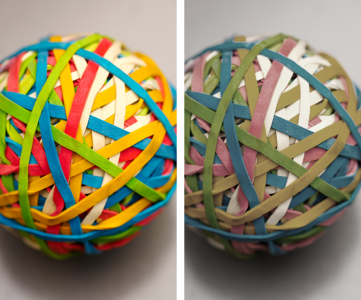
To modify the color composition of the image just slide the controls until to achieve the desired tonality. You have the ability to select one element or all at the same time. In this panel, use the check boxes under Range to select the image areas you want to manipulate. To bring up the Color Balance panel in CorelDRAW go to Effects > Adjust > Color balance or in PHOTO-PAINT go to Adjust > Color balance. This is a great tool to use if you need a more detailed adjustment, especially to differentiate brighter areas from darker ones. Now that you’ve prepped your image you can use the following tools for color changes. Although visually the result may appear like a Duotone, neither the way of producing it nor the way of printing are the same. NOTE: By editing the image this way, the image will be printed as CMYK, not as direct inks. Otherwise, when you go from grayscale to CMYK the information would only be in the Black channel. If the RGB color option is grayed out then your image is already RGB.Įven if you are going to work in CMYK, it’s best to first convert your image to RGB so the gray color is composed of all the colors. To do that in CorelDRAW select Bitmap > Mode > RGB Color. Now that your image is in grayscale make sure it is RGB.
COREL PHOTO PAINT CHANGE COLOR FULL
If your image is in full color, you can make it look gray in CorelDRAW by going to Effects > Adjust > Desaturate. Let’s first look at the effects found in both CorelDRAW and PHOTO-PAINT.įor the purpose of this tutorial, it’s best to start with a gray image then apply these color effects, especially if you’re using multiple effects on the same image. You can manually create a similar look by combining effects. Meaning the image will not have its natural colors. NOTE: Since spot colors are not rendered in the same way as RGB or CMYK, they do not form the same intermediate tones. This will increase the chances of combining colors. You can layer three or four shades under the Type dropdown and select Tritone or Quadtone. This technique will create greater tonal richness in your image than a single ink. This is why you’ll get better results with colors in the same range (as seen in the image below), than if we used opposite tones like blue and yellow for example. These are opaque inks which are difficult to mix so they overlap each other. Under the Type dropdown select Duotone, this will take two ink colors and mix them.ĭon’t forget that you’re mixing inks with this process so the result will be different from mixing RGB or CMYK colors. Remember that if you add a Duotone to a job in CMYK, it could increase the price, since you are adding additional inks. The advantage of this is that it can lead to significant cost savings (one ink or two instead of four) and in some cases, simplifies the printing process (for example, in screen printing). Please note that many Pantone inks have a gloss or tone that cannot be achieved in RGB or CMYK. This technique allows you to create a powerful image using a single ink. Then use the line graph shown in the bottom right to modify the mid-tone curve, making the image lighter or darker. It is important to clarify that if an RGB or CMYK color is selected, the program will replace it with the closest Pantone color. In the Type dropdown, select Monotone, and click the Edit button to change the color (by default, Pantone Process Black) and choose another color if needed. There are four options available in the dialog box, depending on the amount of inks you’re using: Monotone (one single ink), Duotone (two inks), Tritone (three inks) and Quadtone (four direct inks).


To bring up the control panel go to Bitmaps > Mode > Duotone. The original color mode of the image does not matter. To start, open a photo or bitmap in CorelDRAW. The result is different from what you would get with mix of colors (RGB or CMYK). Generally, duotone images are made by one or more direct color tones, such as Pantone inks. This tutorial will show you some of my preferred techniques and tools including:Ĭlick on any of the images below to view full-size.


There are many ways you can adjust the color of images in CorelDRAW and Corel PHOTO-PAINT to create duotone and monochrome effects.


 0 kommentar(er)
0 kommentar(er)
